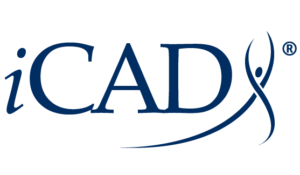
Using mammographic images, it analyzes the woman’s breast anatomy and categorizes her breast density within the appropriate BI-RADS® 5th edition density category. This innovative solution automates the process of breast density reporting and empowers clinicians to further personalize breast cancer screening recommendations for patients.
Remove the Challenges of Subjectivity
Dense breasts can make it challenging to detect breast cancer during annual screenings as overlapping tissue can hide or mimic breast cancer, even with digital breast tomosynthesis (DBT) exams.
Breast density assessment has traditionally been determined by the radiologist’s visual assessment, but studies show that these can vary and clinicians may even disagree with their own assessment year to year.3 This can be confusing for patients, lead to unnecessary additional imaging, and increase patient and facility costs.
PowerLook Density Assessment software removes the challenges of subjectivity in breast density reporting. Using full field digital mammography (FFDM) or synthetic 2D images, it analyzes the dispersion and texture of breast tissue, delivering clinicians a consistent, accurate, and reliable patient-specific breast density assessment.
“We are laser focused on adopting the latest and most innovative technologies at our imaging facilities, and iCAD’s comprehensive solutions fit nicely into our intense focus on preventative care, so we decided to adopt ProFound AI and PowerLook Density Assessment in 2020. With this technology, our density assessments have become more standardized and uniform, which has more than doubled our utilization of screening breast ultrasound and ultimately helps us identify which women would benefit from supplemental screening. Our team is overall more confident and efficient in reading even the most complex mammography cases.”
Tom Cappas
Chief Operating Officer (COO), MRA
Breast Density Facts
- Breast density is one of the strongest and most prevalent breast cancer risk factors.4 As breast density increases, the risk of developing breast cancer increases.5
- Approximately 50% of all women age 40 and older have dense breasts.6
- Studies show wide variation [6-85%] in visual assessment agreement, and radiologists may even disagree with their own assessment year to year.3
Benefits Include:
- Provides objective and consistent breast density assessments
- Ability to integrate and automate breast density reporting within the facility’s RIS/MIS, which may include patient notification letters or risk model integration
- Deep-learning AI multi-vendor solution offers highest matching accuracy for dense and non-dense assessment on the market 1, 2
1. Based on publicly available data as of September 2021. For GE and Hologic only. Uses 2D synthesized images.
2. iCAD data on file.
3. Sprague B, Conant E, Onega T et al. Variation in Mammographic Breast Density Assessments Among Radiologists in Clinical Practice: A Multicenter
Observational Study. Ann Intern Med. 2016; 165(7):457-464. doi:10.7326/M15-2934.
4. Engmann NJ, Golmakani MK, Miglioretti DL, Sprague BL, Kerlikowske K, Breast Cancer Surveillance C. Population-Attributable Risk Proportion of
Clinical Risk Factors for Breast Cancer. JAMA Oncology 2017; 3:1228-1236.
5. McCormack, VA and dos Santos Silva, I. Breast density and parenchymal patterns as markers of breast cancer risk: a meta-analysis. 2006, Cancer
Epidemial Biomarkers Prev, Vol. 15, pp. 1157-1169.
6. National Cancer Institute. Dense Breasts: Answers to Commonly Asked Questions. Accessed via https://www.cancer.gov/types/breast/breastchanges/dense-breasts.
















